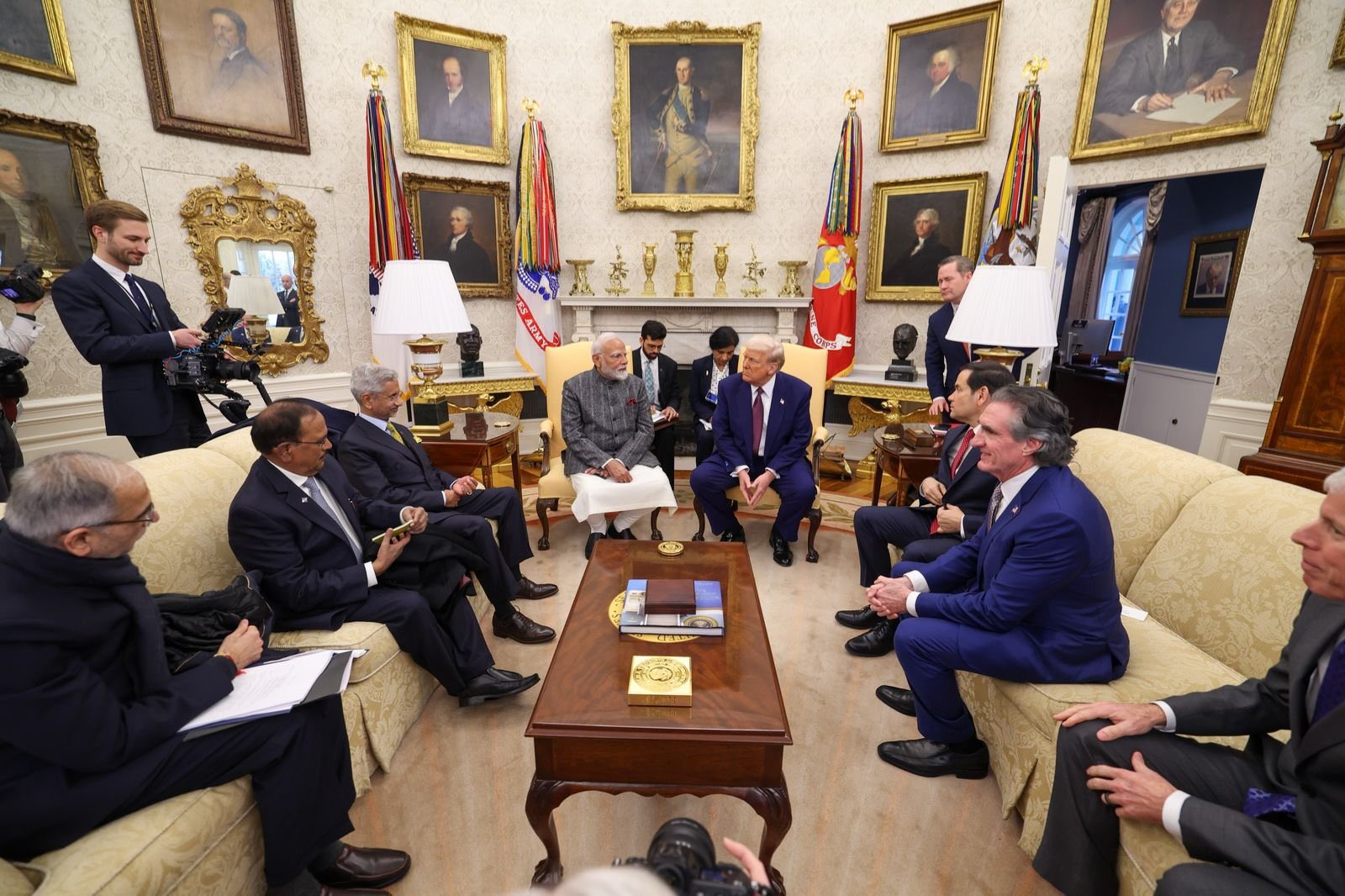NEW DELHI: The President of the United States, Donald J. Trump hosted the Prime Minister of India, Narendra Modi, for an Official Working Visit in Washington, D.C. on February 13.
During this visit, President Trump and PM Modi launched the U.S.-India COMPACT (Catalyzing Opportunities for Military Partnership, Accelerated Commerce & Technology) for the 21st Century.

Expanding Defense Cooperation
The leaders announced plans to sign a new ten-year Framework for the U.S.-India Major Defense Partnership this year.
Both leaders welcomed the successful integration of U.S.-origin defense equipment into India’s military inventory, including C‑130J Super Hercules, C‑17 Globemaster III, P‑8I Poseidon aircraft, CH‑47F Chinooks, MH‑60R Seahawks, AH‑64E Apaches, Harpoon anti-ship missiles, M777 howitzers, and MQ‑9Bs.
ALSO READ: China’s Influence in AMAN 2025: Naval Drill or Strategic Expansion?
Building upon this cooperation, the U.S. and India agreed to expand defense sales and co-production, specifically targeting:

Javelin Anti-Tank Guided Missiles and Stryker Infantry Combat Vehicles to enhance India’s rapid response capabilities.
They also expect completion of procurement for six additional P-8I Maritime Patrol aircraft to enhance India’s maritime surveillance reach in the Indian Ocean Region following agreement on sale terms.
Streamlining Defense Trade and Transfer of Technology
India’s designation as a Major Defense Partner and Strategic Trade Authorization-1 (STA-1) nation facilitates access to advanced U.S. defense technologies. The leaders pledged to review arms transfer regulations, including the International Traffic in Arms Regulations (ITAR), to simplify technology exchange and streamline maintenance, spare supplies, and repair operations for U.S.-origin defense systems in India.
ALSO READ: CISF foils smuggling at Mumbai airport, seizes diamonds worth ₹4.93Cr
Additionally, both nations agreed to open negotiations for a Reciprocal Defense Procurement (RDP) agreement to align procurement processes and enable reciprocal supply of defense goods and services.
Recognizing the growing importance of autonomous defense systems, the leaders launched the Autonomous Systems Industry Alliance (ASIA) to scale up industry partnerships. Notable collaborations include:
Anduril Industries and Mahindra Group co-developing cutting-edge maritime and AI-enabled counter-drone technologies.
L3 Harris and Bharat Electronics jointly working on advanced active towed array systems for naval applications.
Military Exercises and Force Mobility
The U.S. and India committed to elevating military cooperation across multiple domains—air, land, sea, space, and cyberspace—through enhanced training and joint exercises. The leaders welcomed the upcoming Tiger Triumph tri-service exercise, which will take place in India with greater scale and complexity than its inaugural 2019 edition.
Further, both nations vowed to support overseas deployments, enhancing logistics, intelligence-sharing, and force mobility for joint humanitarian and disaster relief operations in the Indo-Pacific region.










